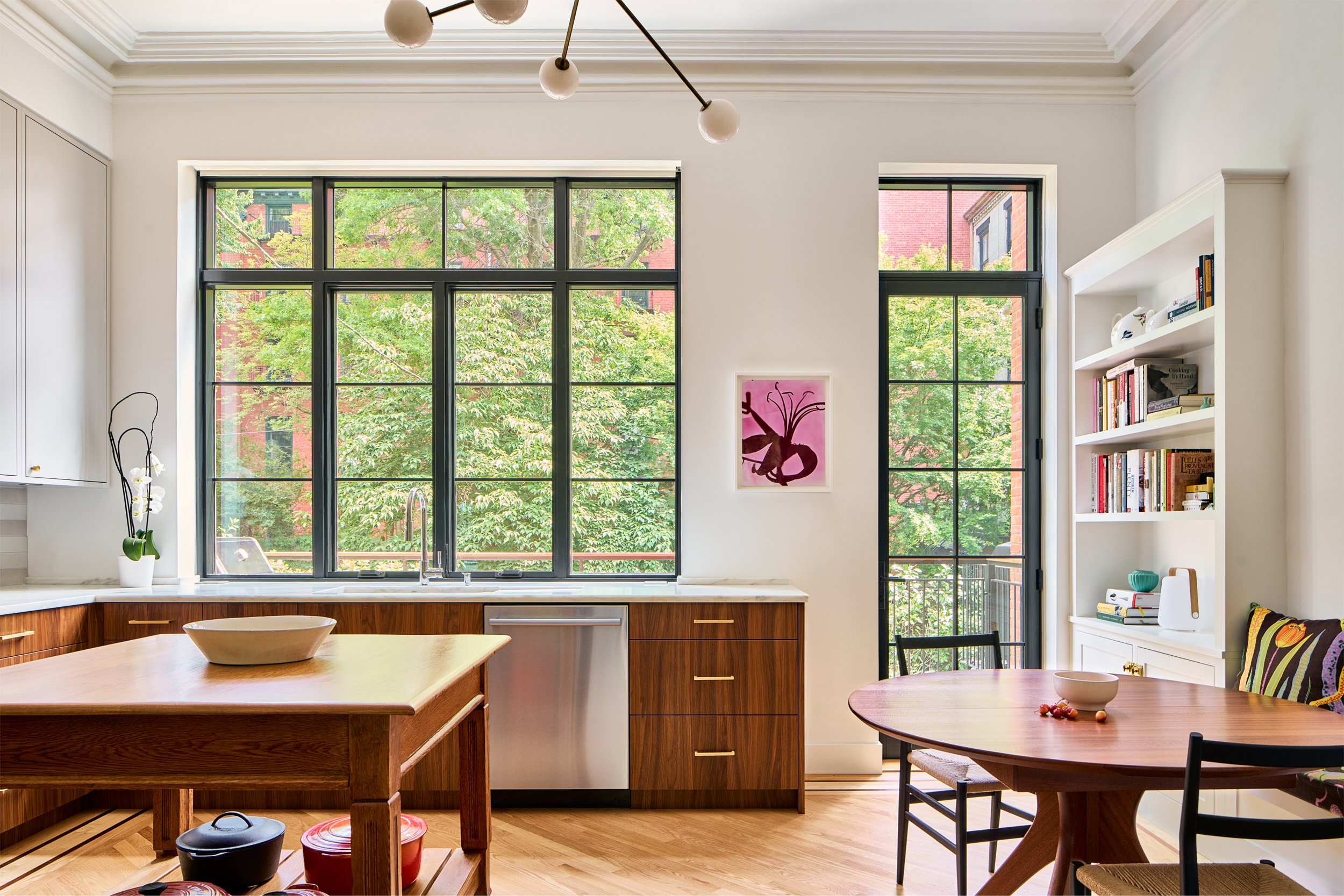Building of the Day: 24 Evans Street
Brooklyn, one building at a time. Name: Quarters A: Former Commandant’s House, Brooklyn Navy Yard Address: 24 Evans Street Cross Streets: Plymouth and Hudson Streets, behind private gate. Neighborhood: Vinegar Hill Year Built: 1805-1806 Architectural Style: Federal Architect: attributed to Charles Bulfinch Other Buildings by Architect: United States Capitol Building, Wash. DC, Mass. State House,…

Brooklyn, one building at a time.
Name: Quarters A: Former Commandant’s House, Brooklyn Navy Yard
Address: 24 Evans Street
Cross Streets: Plymouth and Hudson Streets, behind private gate.
Neighborhood: Vinegar Hill
Year Built: 1805-1806
Architectural Style: Federal
Architect: attributed to Charles Bulfinch
Other Buildings by Architect: United States Capitol Building, Wash. DC, Mass. State House, Old Ct. Statehouse, Maine Statehouse, University Hall at Harvard, among others.
Landmarked: Yes, individual landmark (1965), National Register of Historic Places, and a National Historic Landmark.
The story: This house is one of the worst kept secrets of Brooklyn. Sooner or later, especially if you have a car, people end up at this triple landmarked house, gawp at it through the gates, and run to find out what it is, and why it’s perched here, behind strong iron gates, and across the street from an extremely fugly Con Ed power facility. It’s one of the great Brooklyn conceits to hear people talk about “discovering” the house, and then you can say, “Oh, that’s the old Commandant’s House. You didn’t know it was there?” (Confession: I’ve done that. Mea culpa.) But I have to admit; it was only a month ago that I was able to get out of a car, and actually take some photographs. And up close, the house is cooler than ever, and is still such a tantalizing mystery.
We know quite a lot about it, most from behind the forbidding gates. It’s old, one of Brooklyn’s older buildings, dating back to 1806, when it was built to be Quarters A, the home of the Naval Yard Commandant. The architect is thought to be Charles Bulfinch, the first native born architect in America, the prolific designer of Capital buildings and State Houses, in Massachusetts, Connecticut and Maine, as well as the architect of part of the Capitol Building in Washington, DC. Unfortunately, there is no real documentation on that, and it may be one of those great apocryphal attributions that will stand forever.
We can only see the back of the house from the gates, and can only imagine the view the front must give, overlooking the Navy Yard itself. It’s a large clapboard house, four bays wide and five bays deep. There is a large greenhouse attached, and the house has a wonderful wrap around verandah, and a rooftop observation deck. The house is a Federal delight with interior fan lights, mantels, and an oval dining room, said to have the same dimensions as the Oval Office. It dates only a few years younger than Manhattan’s Gracie Mansion, now the official mayor’s residence, but this is a much finer house.
The great Commandant Matthew C. Perry lived here in from 1841-43, ten years before he sailed to Japan and signed the famous treaty opening Japan to the West. All of the subsequent commanders of the Yard have lived here, and in 1905, another addition was added to the house by an unknown architect. The house overlooked the Yard during the Civil and Spanish-American Wars, World Wars I and II. The activity during World War II made the Navy Yard one of the most important military instillations in America.
Yet, after the war, the Yard became a huge white elephant, too big for a peacetime Navy, with many of its functions going elsewhere. In 1964, the Navy Yard closed and they sold the Commandant’s House to a private owner. It is still in private hands. Amazingly, when the brand new New York City Landmarks Commission wanted to landmark the house in 1965, the Navy objected. The measure passed anyway. The house is also on the National Register, and is an even more prestigiously designated a National Historic Landmark, one of only a couple thousand in the entire country. We can only peek through the gates, and wonder, but it’s certainly good that this very historic house is protected and preserved, and that its present owners are good stewards of this important landmark. GMAP
(Special thanks to Brookynista for our road trip to this, and other cool places in our fair town.)












Couldn’t we just drive a stake through the heart of this Bulfinch thing and finally be rid of it?
a few answers toward your question here: http://www.scoutingny.com/?p=1559
a few answers toward your question here: http://www.scoutingny.com/?p=1559